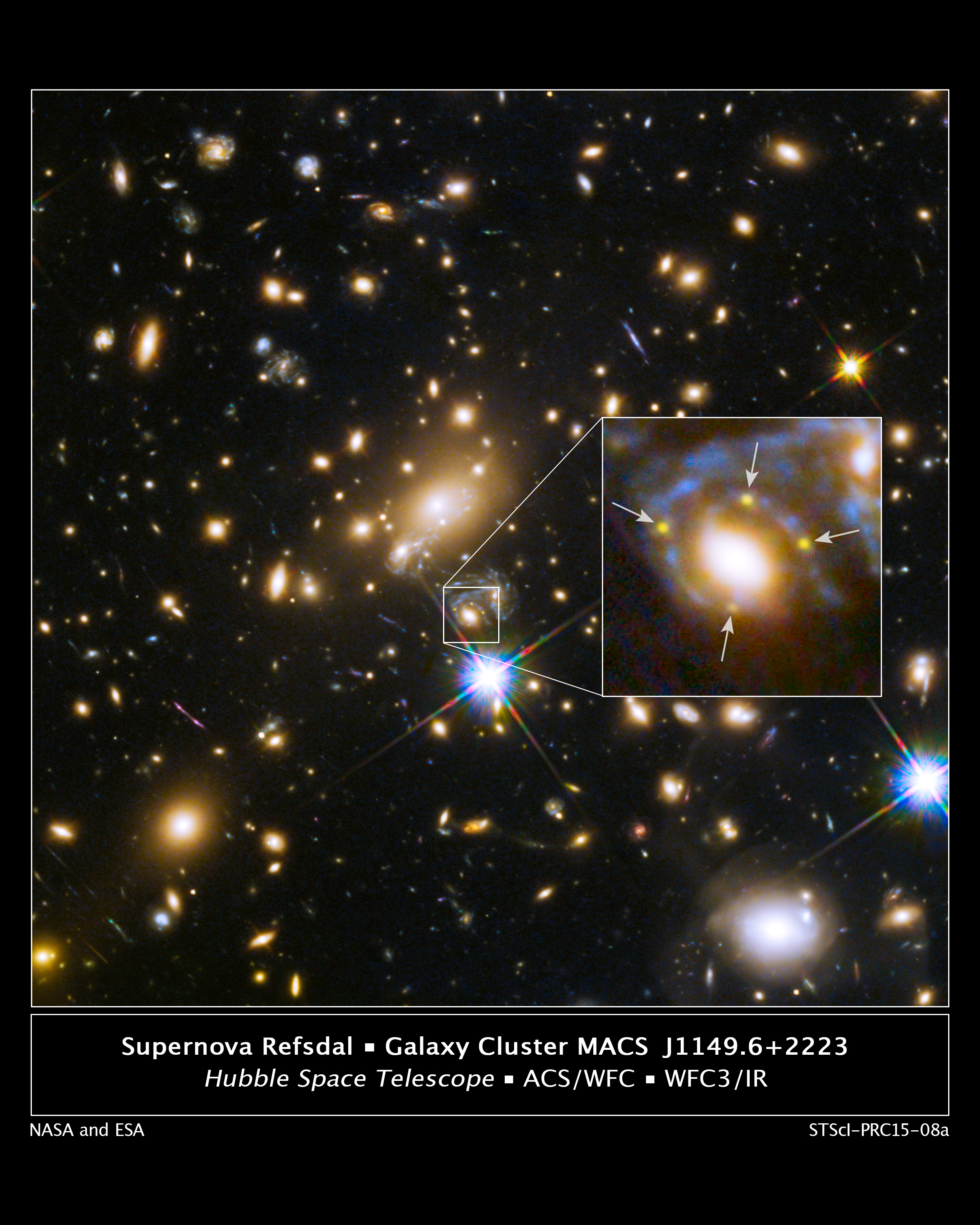
Hubble Spots the First Gravitationally Lensed Supernova
The powerful gravity of a galaxy embedded in a massive cluster of galaxies in this Hubble Space Telescope image is producing multiple images of a single distant supernova far behind it. Both the galaxy and the galaxy cluster are acting like a giant cosmic lens, bending and magnifying light from the supernova behind them, an effect called gravitational lensing. The image shows the galaxy's location within a hefty cluster of galaxies called MACS J1149.6+2223, located more than 5 billion light-years away. In the enlarged inset view of the galaxy, the arrows point to the multiple copies of the exploding star, dubbed Supernova Refsdal, located 9.3 billion light-years from Earth. The images are arranged around the galaxy in a cross-shaped pattern called an Einstein Cross. The blue streaks wrapping around the galaxy are the stretched images of the supernova's host spiral galaxy, which has been distorted by the warping of space. The four images were spotted on Nov. 11, 2014. This Hubble image combines data from three months of observations taken in visible light by the Advanced Camera for Surveys and in near-infrared light by the Wide Field Camera 3.
